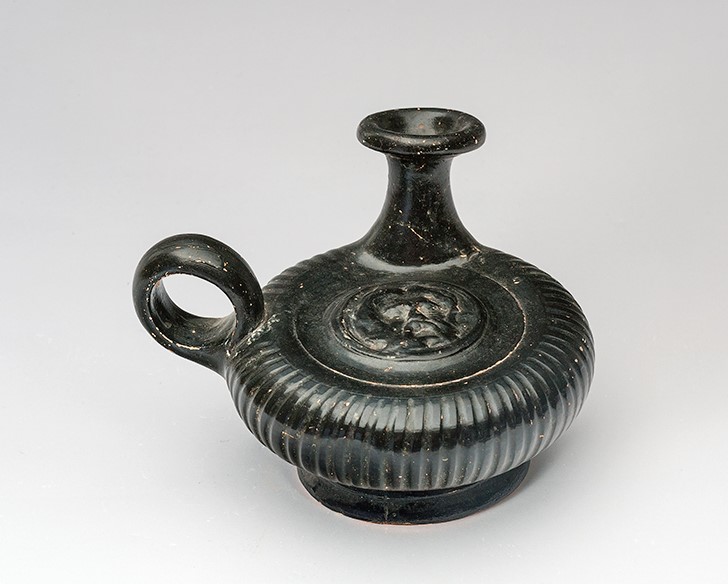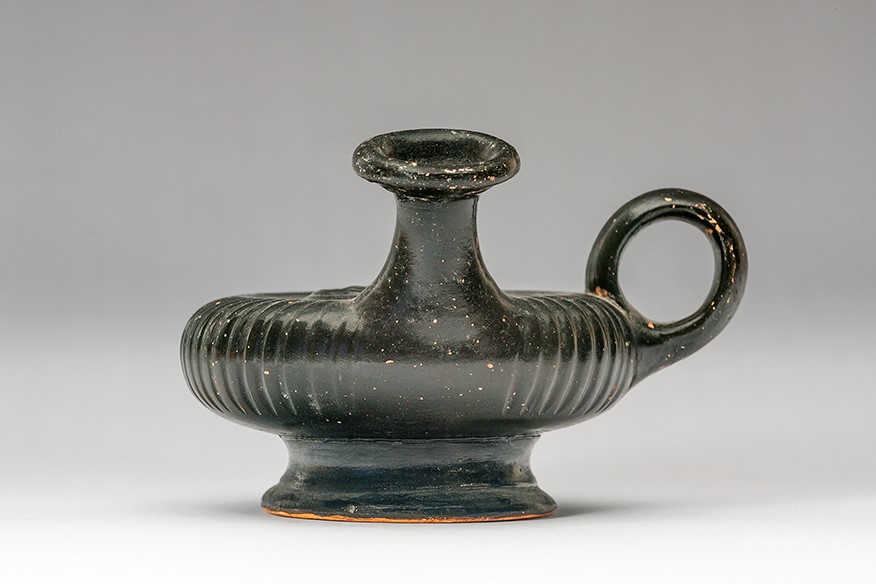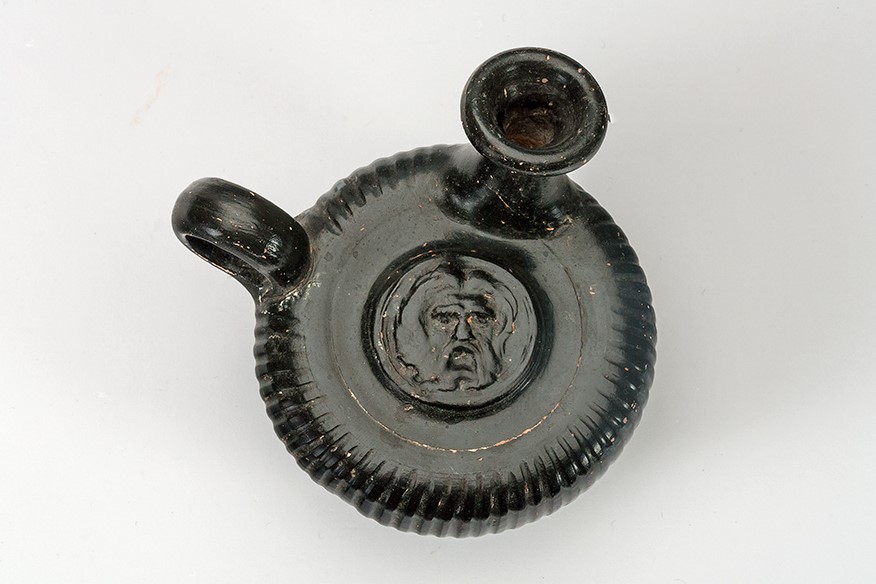Acquisition number: 1965.37
Apulian Black-Glaze Guttus.
The foot is missing and restored; the handle has been broken off and re-joined. Ring handle of segmental section; the body is ribbed. On the top of the body, in the centre, is a relief of a bearded male head seen frontally. Lustrous somewhat metallic black glaze.
Inasmuch as the head has an open mouth, one should perhaps see it as a tragic mask (a kingly type), and one may note the furrows on the brow. On the other hand it is not easy to pin it down to a specific type.
Title: Apulian Black-Glaze Guttus - 1965.37
Acquisition number: 1965.37
Author or editor: J.R. Green
Culture or period: West Greek.
Date: Last third 4th century BC.
Material: Clay - Terracotta
Object type: Vessels - Guttus
Dimensions: 93mm (w) × 79mm (h)
Origin region or location: Italy
Origin city: Altamura.
Display case or on loan: 8
Keywords: Apulian, Black Glaze, Apulian Tomb Group, Pan
J.R. Green with B. Rawson, Catalogue of Antiquities in the Australian National University, A.N.U. (Canberra, 1981) 63.
1965.37
Apulian Black-Glaze Guttus
Preserved ht (to spout) 7.9cm; diam.9.3cm.
The foot is missing and restored; the handle has been broken off and re-joined. Ring handle of segmental section; the body is ribbed. On the top of the body, in the centre, is a relief of a bearded male head seen frontally. Lustrous somewhat metallic black glaze.
Inasmuch as the head has an open mouth, one should perhaps see it as a tragic mask (a kingly type), and one may note the furrows on the brow. On the other hand it is not easy to pin it down to a specific type.
Gutti of this type begin to appear in Apulian graves some time after the middle of the fourth century BC. Those from the excavations at Gioia del Colle published by B.M. Scarfì in Monumenti Antichi 45, 1961, 145ff. have particularly useful contexts, for instance Tomb 2 (pp. 153ff.) and Tomb 3 (pp. 182ff.), both of about 330 BC, or the slightly earlier Tomb 6 (pp. 258ff.). One treatment of this class of material is that by M.-O. Jentel, Les gutti et les askoi à reliefsétrusques et apuliens (Paris 1976) and the same author’s Corpus Vasorum Antiquorum Louvre (15) pll.16-31 where pl. 28, 4 has a similar head but with more wild hair about it. For another selection of such relief medallions, see F. Gilotta, Gutti e askoi a rilievo italioti ed etruschi: teste isolate (Studia Archaeologica, 36, Rome 1985), but he does not include any that matches ours.
It is important to note that these vases are more often Apulian, or indeed Metapontine, than Campanian despite their commonly being referred to as such in the literature.
There has been some discussion of their use. The mouth is like that of an askos and the vessel must have had a similar function. Note for example M.C. Monaco, “Lekythoi ed oxides: vasi da mensa destinati al condimento”, Parola del Passato 294, 1997, 207-224.
J.R. Green with B. Rawson, Catalogue of Antiquities in the Australian National University, A.N.U. (Canberra, 1981) 63.
Australian National University.



